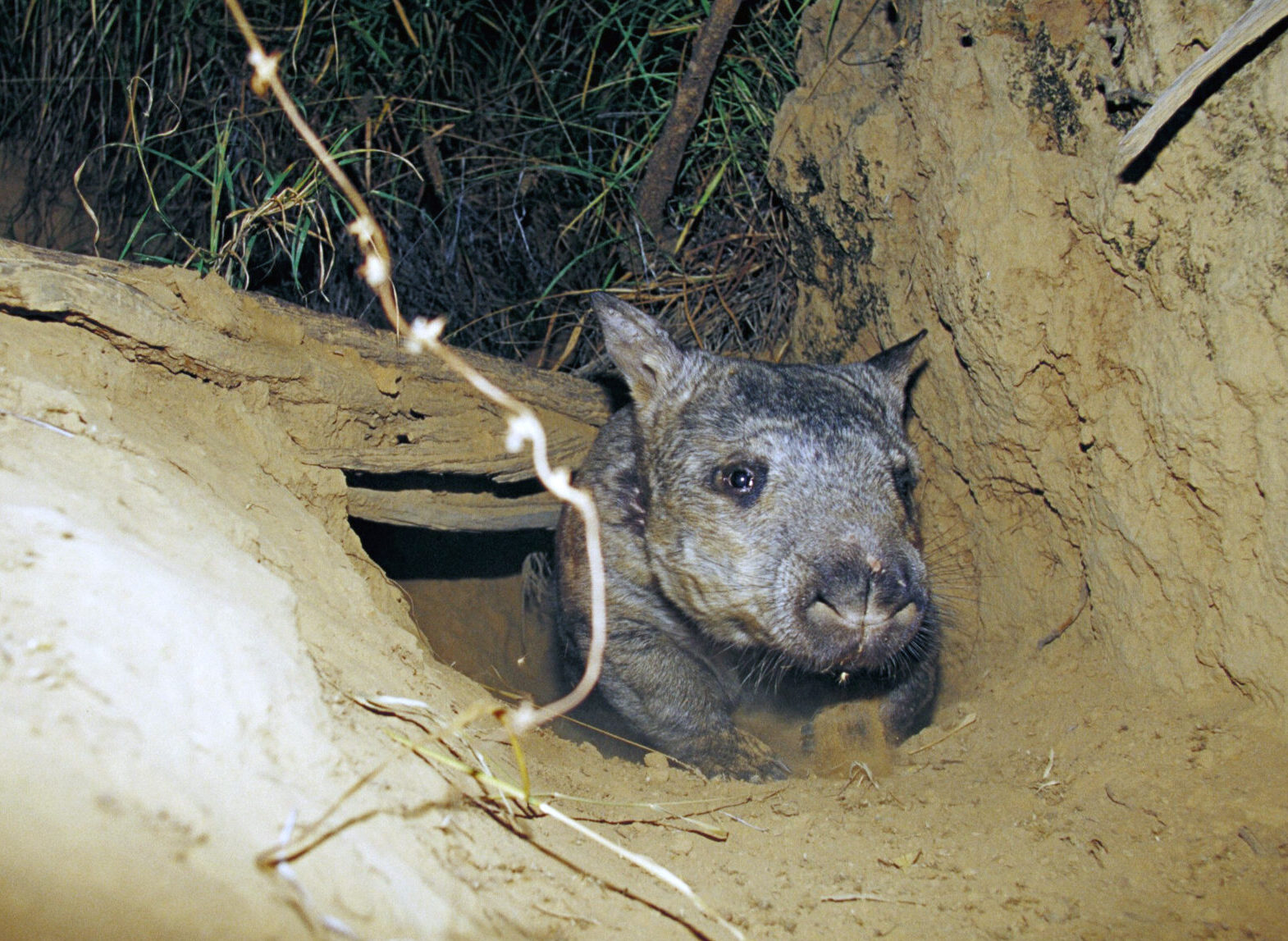| Common name | Northern hairy-nosed wombat |
| Scientific name | Lasiorhinus krefftii |
| Type | Marsupial |
| Diet | Grass and leaves |
| Size | 1.3m in length, weighing up to 40kg |
The northern hairy-nosed wombat (Lasiorhinus krefftii) is the largest of Australia’s three wombat species. It can grow over a metre long and weigh up to 40kg. The northern hairy-nosed wombat has longer, more pointed ears than the common wombat, and also has a wider muzzle and softer fur.
Sandy soil close to trees offers the ideal ground for the wombats to dig burrows. Wombat burrows can be up to 3.5 metres underground, 20m long and half a metre wide. A year-round supply of native grasses also dictates where the wombat resides.
It is predicted that the species has an average lifespan of 20 years. Females give birth to one joey at a time, which is generally between November and April. Joeys stay in the pouch for six to nine months before making their foraging debut during the summer months once they are a year old.


Burrows are shared, especially between females, and wombats will dwell in more than one burrow. During hot weather, other animals may rest in the wombat burrows, such as swamp wallabies and goannas.
Wombats are nocturnal and only leave the burrow to feed when conditions are ideal. During the winter dry season, the species may be active for up to six hours; in summer, only two hours is necessary due to a larger amount of food.
Around 12 different grass species make up the wombats’ diet. Leaves provide the them with the required nutrition, and wombats are usually able to maintain their condition even in droughts. The species’ teeth continue to grow throughout its life at the same rate they are worn down.

The northern hairy-nosed wombat is confined to a section of Epping Forest National Park in central Queensland, with a second population developing in Richard Underwood Nature Refuge near St George. Fossil evidence shows the species once ranged from central NSW to Port Douglas in northern QLD.
Its numbers have been falling for many years due to competition for food with sheep, cattle and rabbits, protracted droughts and predation by wild dogs. By the 1980s just 35 survived in the wild, prompting this wombat to be listed as critically endangered on the IUCN Red List. Conservation efforts have brought its number up into the hundreds but the species remains at high risk.
OTHER WOMBAT SPECIES:
Bare-nosed/Common wombat (Vombatus ursinus); Southern hairy-nosed wombat (Lasiorhinus latifrons)








